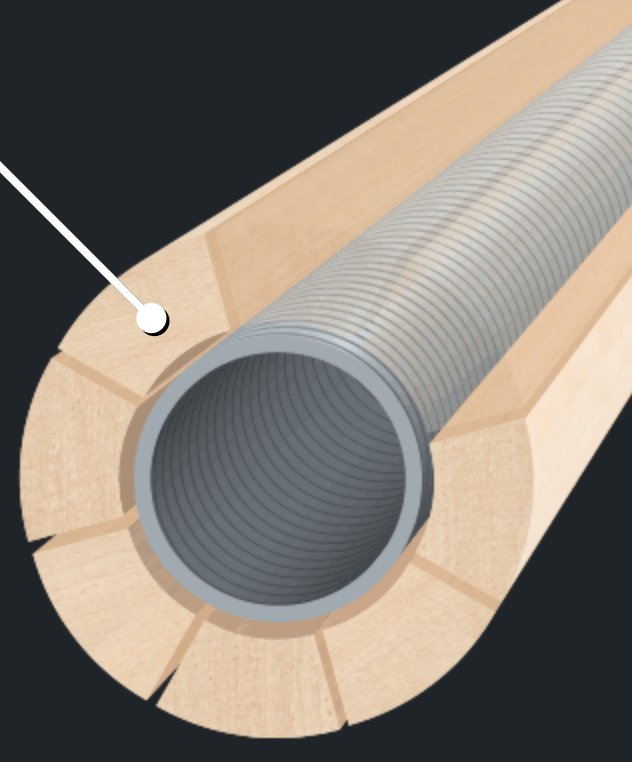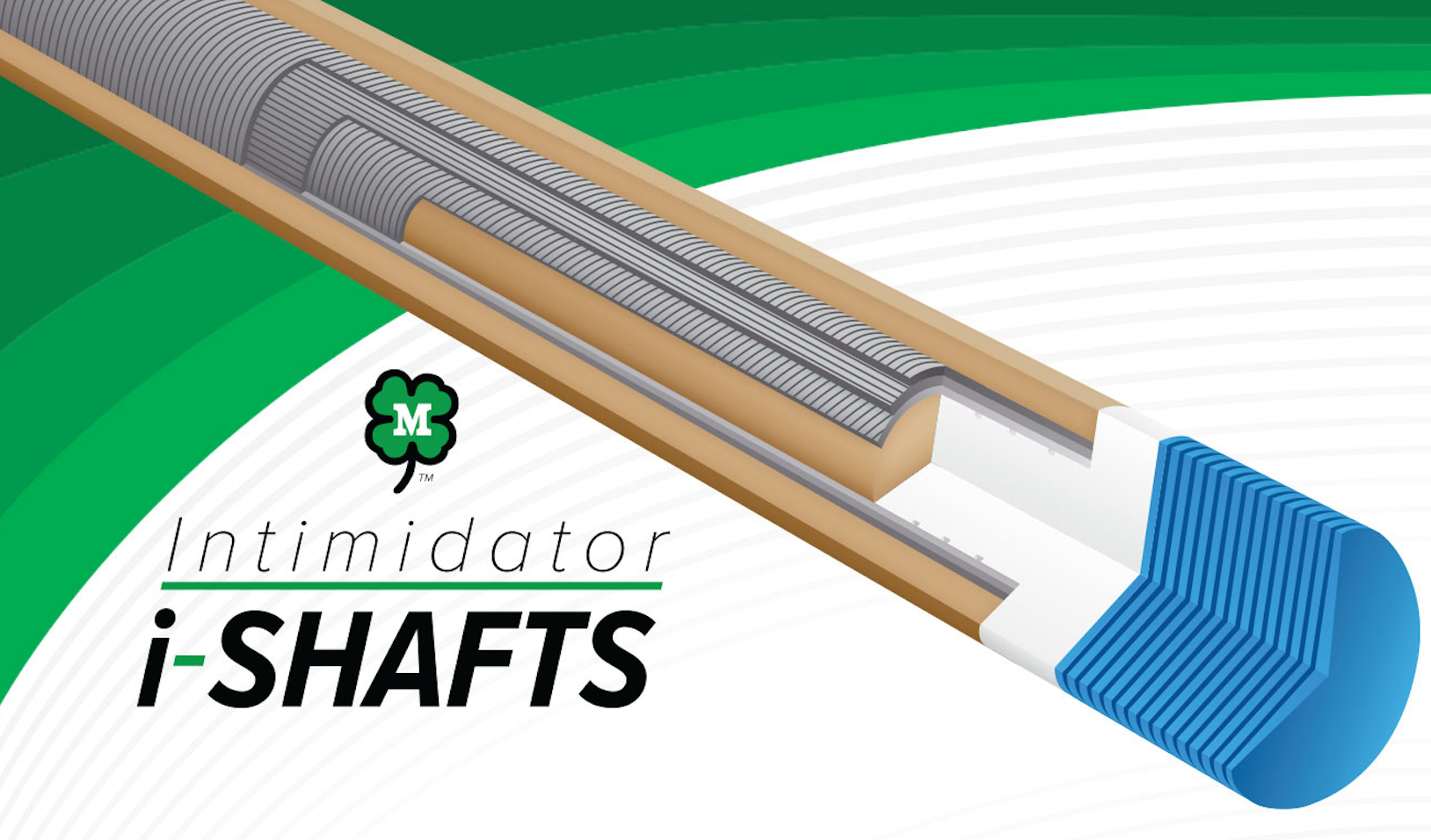McDermott Cue Shafts Buyer's Guide: iPro, Intimidator, and G-Core
Spine, Spin, Deflection, and Performance Compared
The spine of a cue shaft is a natural characteristic present in all shafts, referring to the area that bends the least during a shot. It is the point within the shaft's circumference that offers the most resistance. Directly opposite this stiffest area is the section that bends the most. This variation affects how the shaft reacts during play, as the cue ball responds differently depending on the position of the spine, influencing the cue’s performance, especially as players rotate the shaft between shots.
In solid maple shafts, the stiffer the wood, the more pronounced the difference between the rigid and flexible sections. This can affect how the cue performs when applying spin (or "English") to the ball.
In games like snooker, played on larger tables with smaller balls, the spine becomes more noticeable during long-distance shots. To counteract this, snooker cues often feature a flat spot on the butt, which helps players align the spine consistently for every shot, reducing variations caused by the spine.
Similarly, in golf, aligning the spine in graphite or fiberglass shafts is critical for consistent performance. Without proper spine alignment, clubs can hit the ball differently. Tubular steel shafts, however, are more uniform, and their spines have little effect. Carbon fiber tubes used in pool cues, like tubular steel, are engineered for radial consistency. The composite structure of carbon fiber minimizes or eliminates spines, providing predictable responses during shots. Carbon fiber shafts are designed to be homogeneous, much like steel shafts, offering uniform performance.
Innovations in Shaft Construction: Carbon Fiber and Radial Consistency
Another approach to achieving a centered spine is through pie-piece construction. In this method, the shaft is built from multiple pieces of wood, with the grain lines radiating outward from the center, which creates a more distinct spine. This construction improves stability and reduces the chances of warping over time, offering better radial consistency compared to solid wood shafts. However, this technique still does not achieve perfect radial consistency due to alignment challenges during the turning process. While the pie-piece segments are assembled with the intention of keeping the spine centered along the entire shaft, the process of turning the shaft in a lathe leaves only the ends of the shaft secured, while the middle is free to shift. Most manufacturers turn a shaft multiple times over several days to allow the wood to naturally move and relieve stress. Each new turn removes any resulting warp, but this can cause the spine's apex to slightly shift with each pass, preventing absolute consistency.
A significant advancement in cue shaft construction is the inclusion of carbon fiber cores, as seen in McDermott’s G-Core, iPro and Intimidator shafts. These carbon fiber spines create greater radial consistency than traditional solid wood shafts, ensuring a more centered spine for uniform performance across the entire shaft. By minimizing off-center spines, these shafts deliver more predictable shot behavior, giving players confidence that their cue will react consistently, no matter how the shaft is rotated.
In contrast, older fully wood shafts can have spines that are off-center and rotate their position between shots, leading to inconsistent performance. As these shafts age, the wood fibers gradually break down, which further diminishes their ability to maintain consistent performance. Degradation weakens the shaft’s ability to snap back and correct for swerve. On the other hand, shafts reinforced with carbon fiber, like those from McDermott, maintain their stiffness and consistency over time. The carbon fiber reinforcement prevents this degradation, ensuring the shaft retains its spring and maintains optimal performance. McDermott shafts are engineered for long-term stability and consistent playability.
McDermott G-Core Shaft: Traditional Feel with Carbon Support

The G-Core shaft uses Carbon Tenon Technology, which includes a carbon fiber rod in the first 7 inches at the front section of the shaft. This design provides moderate deflection reduction while maintaining the traditional feel of a maple shaft. The G-Core is perfect for intermediate players transitioning to low-deflection shafts. While not as low-deflection as the iPro or Intimidator, the G-Core offers moderate spin control and is well-suited for players who want a balance between modern performance and traditional feel.
McDermott iPro Shaft: Pie-Piece Construction for Maximum Consistency

The iPro shaft uses pie-piece laminated construction with a carbon fiber core, offering excellent radial consistency. This design helps create a more centered spine, reducing performance inconsistencies. With ultra-low deflection and optimized energy transfer, the iPro is ideal for advanced players seeking precise spin control. The carbon fiber core allows players to generate more spin with ease. With its low deflection properties, players achieve more accurate shots, especially when applying English, making the iPro highly rated for its consistency and performance.
McDermott Intimidator Shaft: Solid Wood with Carbon Fiber Core

The Intimidator i-2 and Intimidator i-3 shafts take a different approach. These shafts are made from solid wood but are cored out to insert a triple-layer carbon fiber core. This combination provides a low-deflection shaft that retains much of the traditional wood feel. The Intimidator is an excellent choice for players seeking a balance between modern low-deflection technology and the natural feel of wood. The Intimidator’s solid wood construction, combined with its carbon fiber core, provides effective spin control, low deflection, and softer hit, while also providing more feedback for players who prefer a traditional feel.
Comparison of iPro, Intimidator, and G-Core Shafts
| Feature | iPro | Intimidator | G-Core |
|---|---|---|---|
| Core Construction | Pie-piece with Carbon Fiber Core | Solid Wood with Carbon Fiber Core | Carbon Tenon Technology |
| Deflection | Ultra-Low Deflection | Low Deflection | Moderate Deflection |
| Feel | More Stiff, Feedback Focused | Balanced between traditional-modern Wood Feel | Softer, More Traditional Feel |
| Spin Control | High Spin Control | Effective Spin Control | Moderate Spin Control |
| Audience | Advanced Players | Intermediate to Advanced Players | Casual to Intermediate Players |
Conclusion: Choosing the Right Shaft
The iPro, Intimidator, and G-Core shafts each offer unique benefits:
- McDermott iPro: Ultra-low deflection, perfect for advanced players seeking maximum spin control and precision.
- McDermott Intimidator: Offers a traditional feel with low-deflection technology, ideal for players who want balance between modern innovation and classic playability.
- McDermott G-Core: Great for intermediate players looking for moderate deflection reduction and a traditional feel.
McDermott Warranty Information
One standout feature of McDermott products is their lifetime warranty, which covers manufacturing defects, warpage, and other issues, giving players peace of mind when investing in a high-quality shaft. McDermott’s Maintenance Program is one of the most comprehensive in the industry, ensuring that their shafts maintain peak performance over time. This warranty coverage applies to all McDermott shafts, including the iPro, Intimidator, and G-Core, further ensuring the longevity and reliability of these products
Explore More
If you're ready to explore the full range of McDermott shafts, check out the full selection below:
Shop all McDermott Shafts



